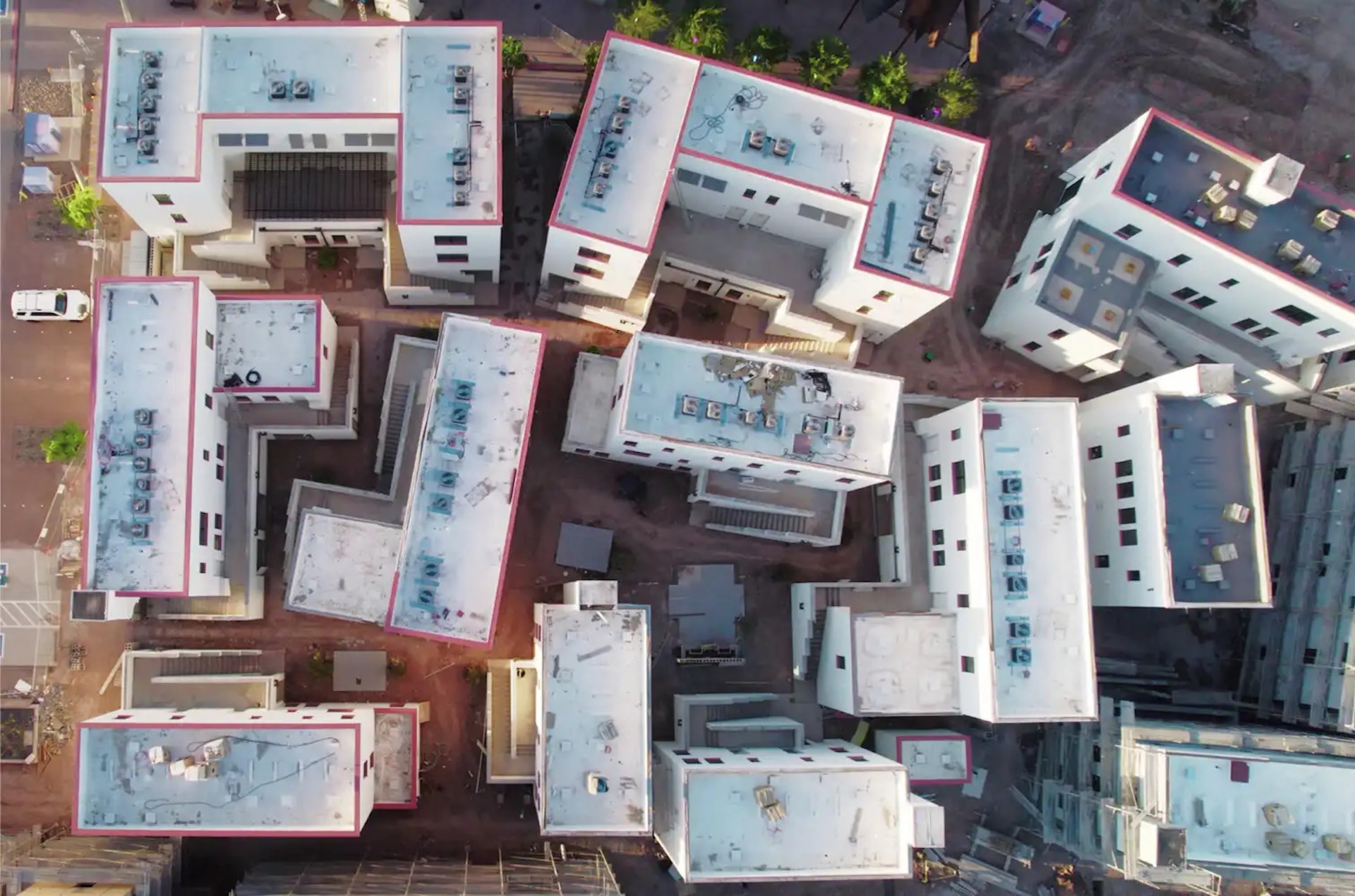In the small town just a light-rail trip away from downtown Phoenix, residents of a place called Culdesac in Arizona are one of the first non-urban communities in the U.S. to boast a walkable, car-free neighborhood.
Walking the streets of the $170 million, 17-acre community, which is in reality more like a large campus within the city of Tempe, residents notice no parking for cars among the Mediterranean-style white units. Instead, the homes are mixed with courtyards for social gatherings, grocery stores, restaurants, and yoga studios. For residents of Culdesac, they have everything they need for their economical, physical, and social well-being within walking distance.
About 92% of U.S. households in 2021 had at least one car. Transportation marks the largest source of greenhouse gas pollution in the U.S., accounting for 28% of total pollution in 2021. The greenhouse gases come largely from the burning of fossil fuels.
While electric vehicle production is increasing and aims to be the mainstream form of transportation in the future — S&P Global Mobility forecasts electric vehicle sales to account for 40% of all passenger vehicle sales by 2030 — EV vehicles don't address the high demand for lithium mining needed for EVs and the underlying effect of car-centered communities in the U.S.
Culdesac aims to eliminate the harmful effects of cars on the environment with climate-friendly housing while reuniting communities outside of the home and workplace.
"Today in the U.S. we only build two kinds of housing: single-family homes that are lonely and have a painful commute, or we build these mid-rise projects with double-loaded corridors," said Ryan Johnson, co-founder of Culdesac alongside Jeff Berens. Johnson's enthusiasm for the car-free neighborhood came from living and traveling in countries that focus on walkability: "We can build walkable neighborhoods successfully in the U.S. in [the] 2020s."
The development broke ground in 2019 and has seen its first residents move in and try the lifestyle in 2023. "For some, cars equal freedom, but for me, it's a restriction," Vanessa Fox, a 32-year-old resident of Culdesac said. "Freedom is being able to just simply walk out and access places."
The developers hope to have around 1,000 people live in Culdesac by 2025, when their 760 units will be completed. The first 200 residents will receive ebikes.
"We look back nostalgically at college, because it's the only time most people have lived in a walkable neighborhood," says Johnson. "People are happier and healthier, and even wealthier when they're living in a walkable neighborhood."
Today, urban metropolises mark the only places for walkable communities. But even these cities rely on cars for transportation and are not fully accessible for residents to non-urban environments, such as the Blue Hills Reservation outside Boston that is only minutes from downtown yet still unreachable for many residents.
Countries across the globe are looking at ways of eliminating cars. For example, Wales is banning new road projects in an effort to go carbon-neutral. Culdesac is a glimpse into the future of 15-minute cities, putting people at the center of transportation, and creating a sustainable environment.
Join our free newsletter for cool news and actionable info that makes it easy to help yourself while helping the planet.









